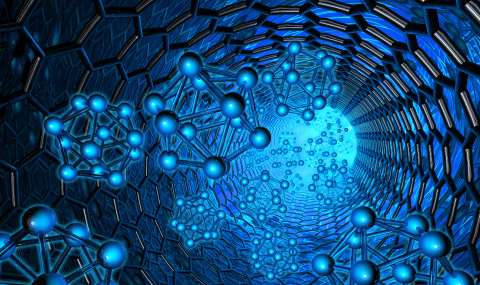Teachers in the 21st century have access to new, unique tools and platforms that were much less readily available in the last decade. Technology in the era of Web 2.0 includes websites and applications that provide a technological platform for users to independently create and share uploaded content for chemists and for chemistry teachers .
We have a lot of experience with teachers’ PD regarding adopting technological tools for teaching chemistry. In order to incorporate videos, social networks, scientific animations, and visualizations into chemistry lessons, teachers need to develop their knowledge, not only regarding the technical aspects of using them in the classroom but also in choosing appropriate methods and strategies that will facilitate incorporating these various tools and approaches into the chemistry learning process.
Moreover, they should understand the benefits of using these technological tools and believe in their own abilities to use technology in class. Teachers need to have sufficient technological pedagogical content knowledge (TPACK) as well as adequate self-efficacy beliefs to make technological tools part of their working tools as chemistry teachers. I, therefore, examine teachers' knowledge and self-efficacy beliefs when I study their professional development for the integration of technological tools.
During the Covid-19 pandemic, when all educational systems shifted to online teaching, we combined this knowledge in using technology for chemistry teaching with my experience with online teaching, and methodologically and comprehensively identified the needs of chemistry high-school teachers to support their remote online teaching. These results were discussed in an emergency committee of experts of the Chief Scientist of the Ministry of Education (I was a member of the committee) that was called by the Minister of Education to provide a position paper related to teacher PD for online teaching during the first wave of the pandemic.
The research efforts during the pandemic resulted in interesting findings rendering technology integration:
1) At the high school level.
The identification of the knowledge domains for online teaching of experienced chemistry teachers, which were developed during the pandemic (which I lead in collaboration with Prof. Orland-Barak, Haifa University). We have identified nine knowledge domains that together comprise the knowledge needed for online teaching.
2) At the higher education level.
We found that the lecturers developed a limited knowledge during a semester-long online teaching experience (mainly technological knowledge and techno-pedagogical knowledge) and did not reach the full TPACK. They also did not develop their self-efficacy regarding online teaching. This finding contradicts previous research on self-efficacy development and it highlights the importance of taking studies that were conducted during the pandemic with caution. The conditions of a worldwide pandemic might not be suitable to generalize these studies to other cases.
PeTeL (Personalized Teaching and Learning) environment.
A need to share resources by teachers and lecturers has emerged, and we were able to apply a unique environment that enables chemistry teachers to share the teaching resources they develop via the PeTeL (Personalized Teaching and Learning) environment. The PeTeL initiative, developed at the Department of Science Teaching at the Weizmann Institute, is a technological environment for science teachers (physics, chemistry, and biology). The chemistry branch of PeTeL provides technological tools for the personalization of chemistry teaching. The chem-PeTeL includes diagnostic assignments and activities to address mistakes and misconceptions that are revealed by the assignments. Pedagogic-wise, the PeTeL architecture encourages convenient and fast connectivity between teachers enabling them to collaborate and learn from each other and get feedback from the system. It enables teachers to take an active role in the teaching process and address the different student needs (cognitive, affective, interests, etc.) in heterogeneous science classes. This multi-faceted approach is in contrast to “student-facing-computers” adaptive learning approaches in which learning is carried out individually using tools such as intelligent tutoring systems, with minimal teacher intervention. Teachers combine data generated in the system with their experience in chemistry teaching in order to promote personalization in an ever-changing manner.
Relevant Publications of my research group (2010-2021):
Tuvi-Arad, I., & Blonder, R. (2010). Continuous symmetry & chemistry teachers: Learning advanced chemistry content through novel visualization tools. Chemistry Education: Research and Practice, 11, 48-58.
Blonder, R., Jonatan, M., Bar-Dov, Z., Benny, N., Rap, S., & Sakhnini, S. (2013). Can You Tube it? Providing chemistry teachers with technological tools and enhancing their efficacy beliefs. Chemistry Education: Research and Practice, 14, 269-285. doi:10.1039/c3rp00001j
Rap, S., & Blonder, R. (2016). Let's face(book) it: Analyzing interactions in social network groups for chemistry learning. Journal of Science Education and Technology. 25(1), 62-76. doi: 10.1007/s10956-015-9577-1
Blonder, R. & Rap, S. (2017). I like Facebook: Exploring Israeli high school chemistry teachers' TPACK and self-efficacy beliefs, Education and Information Technologies, 22(2), 697–724. doi:10.1007/s10639-015-9384-6
Rap, S., & Blonder, R. (2017). Thou shall not try to speak in the Facebook language: Students' perspectives regarding using Facebook for chemistry learning. Computers & Education, 114, 69-78. doi:http://dx.doi.org/10.1016/j.compedu.2017.06.014
Tuvi-Arad, I. & Blonder, R. (2019). Technology in the Service of Pedagogy: Teaching with Chemistry Databases. Israel Journal of Chemistry. 59, 572 –582 doi:10.1002/ijch.201800076
Dorfman, B.-S., Terrill, B., Patterson, K., Yarden, A., Blonder, R. (2019). Teachers personalize videos and animations of biochemical processes: Results from a professional development workshop. Chemistry Education Research and Practice, 20I(4), 772-786. doi:10.1039/C9RP00057G
Rap, S., Feldman-Maggor, Y., Aviran, E., Shvarts-Serebro, I., Easa, E., Yonai, E., Waldman, R., & Blonder, R. (2020). An applied research-based approach to support chemistry teachers during the COVID-19 pandemic. Journal of Chemical Education, 79(9), 3278-3284. doi:10.1021/acs.jchemed.0c00687
Feldman-Maggor, Y., Barhoom, S., Blonder, R., & Tuvi-Arad, I. (2021). (2021). Behind the scenes of educational data mining. Education and Information Technologies, 26(2), 1455-1470. doi:10.1007/s10639-020-10309-x
Marchak, D., Shvarts-Serebro, I. & Blonder, R. (2021). Crafting molecular geometries: Implications of neuro-pedagogy on teaching chemical content. Journal of Chemical Education. doi: 10.1021/acs.jchemed.0c00306
Marchak, D., Shvarts-Serebro, I. & Blonder, R. (2021). Teaching chemistry by a creative approach - adapting a teachers’ course for active remote learning. Journal of Chemical Education. doi: 10.1021/acs.jchemed.0c01341

